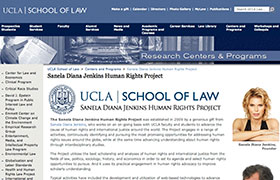- Hemodialysis Department, University of Sarajevo Clinical Center
- Dialysis saves the lives of patients with kidney failure. But the time-consuming process requires an enormous amount of time connected to the machine. Freedom from the machine only comes with a new kidney.
- Klinika za hemodijalizu, Klinički centar Univerziteta u Sarajevu (KCUS)
- Dijaliza može spasiti život pacijentima koji imaju problem sa radom bubrega. Sam postupak je dugotrajan i zahtijeva da pacijent bude priključen na mašinu dug vremenski period. Da bi se oslobodio dijalize, pacijent mora dobiti novi bubreg.
Imagine going to a clinic for four hours every other day for six years. Imagine having no choice but to sit in a chair with a needle stuck in your vein all that time, knowing that is what’s keeping you alive.
Aldin Vrabac’s kidneys were failing. From 2006 to 2012, he was a regular patient at the Hemodialysis Department at the University of Sarajevo Clinical Center. Every other day, he would sit in the chair, have a needle inserted in his vein, and watch his blood float through a clear plastic tube for four hours straight. This painstakingly slow process cleaned his blood while he awaited a kidney transplant.
“Our lives stopped,” says Aldin’s wife Lejla. “Our first child kept growing, so we knew time was passing—but it was only passing for my son, and not for my husband and me. We were locked in a medical nightmare.”
In a normal person, the kidneys remove waste products such as creatinine, urea, and free water from the blood. But when the kidneys fail, hemodialysis is used to perform this cleansing function outside of the body. The patient is connected with tubes to the dialysis machine which emulates some of the functions of the kidney. The blood leaves the patient, is cleaned by the machine, and is then returned to the patient. Kidney specialist Dr. Nihad Kukavica says that before the invention of the dialysis process, patients with failing kidneys simply died from waste products building up in their blood. The donation by the Sanela Diana Jenkins Foundation for Bosnia and Herzegovina helps the Hemodialysis Department treat these patients, some of whom live in poverty.
For Aldin, his reliance on the dialysis machine changed in 2012 when his cousin, Selvedina Vrabac, volunteered to be a kidney donor. Everyone has two kidneys but only one is needed to maintain life. The transplant of Selvedina’s kidney was a success. Aldin feels he has been given his life back, with his new kidney taking the place of all those hours in the hemodialysis chair.
In tears, Aldin’s son said, “I always prayed to God to help my Dad, because Dad always helped everyone else.”
Aldin was fortunate to get a successful transplant but in the University of Sarajevo Clinical Center where he spent six years, 307 patients are still there on the dialysis, said Mersiha Ramic, the head nurse. Among those is Goran Šuvalić, 25.
Goran and his family are poor and they struggle to survive. But in addition to the grinding challenges of dire poverty, Goran also suffers from renal failure. Just as Aldin did, Goran’s waiting for a new kidney and watching his blood get cleansed every other day.
The Hemodialysis Department knows that they need to provide more than just medical treatment to those suffering through the months and years of waiting. “Our staff has a healthy relationship with patients, as they’ve been here for years. We have established family-like relationships with them,” Dr. Kukavica said. “This is their second home.”
And as Aldin’s wife Lejla puts it, love and encouragement is what got them through a very difficult period of their lives.
After the transplant, when Aldin returned home to his wife and son, even greater news awaited him: Lejla was pregnant.
“I couldn’t have dreamed of having another kid before the transplant,” says Lejla.
Today, Aldin is the family man, taking care of his two young kids and living free of the dialysis machine which saved his life.
Article and photos by photojournalist Dijana Muminović
Zamislite kako izgleda ići svaki dan u bolnicu i provoditi tamo po četiri sata i tako šest godina. Zamislite kako je to kad nemate drugog izbora, nego da svo to vrijeme provodite sjedeći u stolici, sa iglom ubodenom u venu, jer znate da vas to održava u životu.
Aldin Vrabac imao je taj problem - njegov bubreg je počeo da otkazuje. U periodu od 2006. do 2012. godine Aldin je bio redovan pacijent na Klinici za hemodijalizu KCUS-a. Svaki drugi dan provodio bi sjedeći u stolici, sa iglom u veni, i gledao kako mu krv teče kroz prozirnu plastičnu cjevčicu. I tako tačno četiri sata. Ovaj bolno dugotrajan postupak je pomagao da se njegova krv očisti dok je čekao transplantaciju bubrega.
“Naši životi su stali,” kaže Aldinova supruga Lejla. “Naše dijete je raslo i jedino po tome smo znali da vrijeme prolazi. Ali to je važilo samo za našeg sina, ne za mog muža i mene. Mi kao da smo proživljavali noćnu moru.”
Kod zdrave osobe bubrezi rade tako što uklanjaju otpadne tvari iz krvi, poput kreatinina, ureae i vode. Međutim, kada dođe do otkazivanja rada bubrega, ovu funkciju čišćenja toksina iz organizma vrši hemodijaliza. Pacijent se pomoću cjevčica priključuje na aparat za dijalizu, koji preuzima neke od funkcija bubrega. Krv napušta tijelo pacijenta, a aparat je čisti i nakon toga ponovo vraća u tijelo. Specijalista za bubrežne bolesti, dr. Nihad Kukavica kaže da su, u vrijeme dok je postupak dijalize bio nepoznat, pacijenti sa ovakvim problemom u radu bubrega jednostavno umirali jer su im se u krvi nakupljali toksini. Donacija koju je Klinici za hemodijalizu uručila Fondacija Sanela Diana Jenkins za Bosnu i Hercegovinu pomogla je u liječenju ovih pacijenata, od kojih su neki vrlo siromašni.
Što se tiče Aldina, njegova zavisnost od aparata za dijalizu prekinuta je 2012. godine kada je njegova rodica, Selvedina Vrabac, odlučila da mu daruje bubreg. Svako od nas ima dva bubrega, ali za život je potreban samo jedan. Transplantacija je obavljena uspješno. Aldin osjeća da se vratio u život sada kada ima novi bubreg i nije primoran provoditi silne sate u stolici za hemodijalizu.
“Uvijek sam molio Boga da pomogne mom tati, jer je moj tata uvijek pomagao drugima,” kaže kroz suze Aldinov sin.
Aldin je imao sreće i presađivanje bubrega je uspješno prošlo. Međutim, u KCUS-u gdje je proveo šest godina, još uvijek ima 307 pacijenata na dijalizi, kaže Mersiha Ramić, glavna medicinska sestra. Među njima je i Goran Šuvalić, 25.
Goran i njegova porodica su siromašni i bore se da prežive. Ali pored okrutne borbe sa teškim siromaštvom, Goran ima problem i sa zatajenjem rada bubrega. Baš kao i Aldin, Goran čeka na novi bubreg i svaki drugi dan ide na dijalizu.
Na Klinici za hemodijalizu znaju da za ljude koji godinama pate i čekaju na transplantaciju treba osigurati više od samog medicinskog tretmana. “Naše osoblje ima dobar odnos sa pacijentima, jer oni su ovdje već godinama. Skoro da smo kao porodica,” kaže dr. Kukavica. “Ovo je njihov drugi dom.”
Prema onome što kaže Aldinova supruga Lejla, ljubav i hrabrost su im pomogli da prežive taj težak period u njihovim životima.
Nakon transplantacije, na povratku kući svojoj supruzi i sinu Aldina su sačekale još bolje vijesti: Lejla je bila trudna.
“Nisam mogla ni pomisliti na drugo dijete prije transplantacije,” kaže Lejla.
Danas je Aldin porodičan čovjek koji brine o svoje dvoje djece i nema više potrebu za aparatom za dijalizu koji mu je spasio život.
Autor članaka i fotografija: Dijana Muminović


_40_940x400.jpg)
_30_940x400.jpg)
_30_940x400.jpg)
_20_940x400.jpg)
_20_940x400.jpg)
_40_940x400.jpg)
_20_940x400.jpg)
_30_940x400.jpg)
_30_940x400.jpg)
_40_940x400.jpg)
_BW_30_700x466.jpg)
_BW_30_700x466.jpg)
_BW_30_700x466.jpg)
_BW_30_700x466.jpg)



